Training intensity distributions: From Polarized to Pyramidal models, specificity is key in Long Distance Triathlon
In the Ironman community, there is a lot of talk about training intensity distribution. In this blog, I am going to cover some of the basics around training intensity distribution, which is one of the key concepts you need to navigate in building up to your race. What is training intensity distribut

In the Ironman community, there is a lot of talk about training intensity distribution. In this blog, I am going to cover some of the basics around training intensity distribution, which is one of the key concepts you need to navigate in building up to your race.
What is training intensity distribution?
So, before we can even think about discussing the right training intensity distribution when preparing for an Ironman, it is first important to make absolutely sure we know what the term means. Essentially, when we refer to training intensity distribution, we are talking about how much of the time we spend in different physiologically based training intensity zones. Whilst there is a range of different training zone models, the simplest and most applicable is probably the three-zone model, which is the one we use to quantify training intensity distribution. In the three-zone model, you have two training zone ‘thresholds’, which we refer to as the lactate threshold (LT) and maximum metabolic steady-state (MMSS). The three-zone model, therefore, quantifies training below the LT, between the LT and MMSS, and above the MMSS. In this blog, we will refer to Zone 1 (<LT), 2 (LT-MMSS), and 3 (>MMSS).
The training intensity distribution is typically expressed as a percentage of total training time in Zones 1, 2, and 3. If you want to geek out a bit, I suggest having a read of Prof. Stephen Seiler’s freely available 2009 article (11). Stephen is probably the world’s foremost researcher on training intensity distribution. See his TEDx talk here:
Polarised and threshold training models
Now let’s introduce the two most-discussed types of training intensity distribution: polarized and threshold training. The polarized model was first described within the training performed by the East German system from 1970-80, where a high volume of low-intensity training appeared balanced against the regular application of high-intensity training bouts (~90% to >100% VO2max). Many more recent descriptive studies of real-world elite endurance athletes have reported the use of polarized training intensity distributions, including in Ironman triathletes, rowers, marathon runners, and cyclists (1, 4, 6, 7, 9, 14). This training organization contrasts the classic threshold model, which involves much more time spent in Zone 2 with minimal high-intensity intervals above the MMSS (~57% in Zone 1, ~43% in Zone 2, 0% in Zone 3) (5). There are certainly many athletes who train with a threshold model, particularly in amateur endurance sport.
So, which is better? Well, it’s difficult to say that one is “better” than the other, particularly as only a few studies have compared polarized and threshold models. the studies that have been conducted in this field do suggest greater adaptations for endurance athletes training in a polarised fashion rather than with a threshold focus, for laboratory markers of endurance performance as well as in time-trial assessments (5, 13). Indeed, a recent meta-analysis of studies focused on running performance – a process where all available data on a topic is combined – suggested the balance of evidence favoured polarized training (3).
The main rationale behind using a polarized model of training is to facilitate recovery and maximize training volume (8). We know that training in Zone 1, i.e. below the LT, is less physiologically stressful than training in Zones 2 and 3, and therefore requires less recovery time afterwards. This was neatly shown in a study of cardiac autonomic recovery by Prof. Seiler (10). The theory goes that we can accumulate a larger overall training volume if we focus our training – perhaps ~75-85% of it – in Zone 1. We then sprinkle in a small number of specific high-intensity work-outs in Zones 2 and 3 to stimulate specific high-intensity adaptations. This approach is further backed up by research demonstrating the importance of overall training volume in adaptive processes (2), and the recent work describing specific adaptations to low-intensity training seen in type I muscle fibres (12).
Ironman triathlon: What intensity are we working at?
When we consider training intensity distribution, it is important to consider the intensity of our event. Event-specific demands are something we focus on more and more as we move through training cycles and get closer to race day, so, even when we are focusing the lion’s share of our overall training below the LT to facilitate high overall training volumes, we might use this information to helps us write our work-outs in the specific and competition phases.
Have a look at the Figures below, which shows my HR distribution from a half-Ironman in Taupo in 2017, and full Ironman that same year. You will notice that most of the race time is spent in that middle Zone, between LT and MMSS.
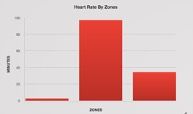
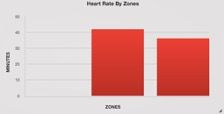
Figure 1. Heart rate by zones (below LT, LT to MMSS, and above MMSS) during a half-Ironman in Taupo in 2017. The graph to the left is from the cycling leg, and the graph to the right is from the running leg. Overall, the bike was made up of 2% <LT, 72% LT-MMSS and 26% >MMSS. Comparatively, the run was made up of 0% at <LT, 54% at LT-MMSS and 46% >MMSS.
Pyramidal training model: Specific phase for Ironman triathletes
There have been more recent discussion about another training intensity model, known as pyramidal training intensity distribution. In pyramidal training, most training is still carried out at low intensity, however, there are decreasing proportions of threshold and high-intensity training performed. The exact defining percentage breakdowns of the pyramidal model have yet to be clearly established, however, we generally refer to a distribution of ~50-75% in Zone 1, ~25-30% in Zone 2, and ~5-10% in Zone 3 as pyramidal. You might think that this model makes a lot of sense for use in the specific and competition phases of the build-up to an Ironman, where we are still looking to maximize overall training volume with our focus on low-intensity work, but want to use our work-outs to mimic the physiological demands of long-distance triathlon. This is the approach that I have used in the past, and discuss in detail in LDT102. Have a look at my training intensity distribution during a key specific phase week in the build-up to that half-Ironman in 2017 below.
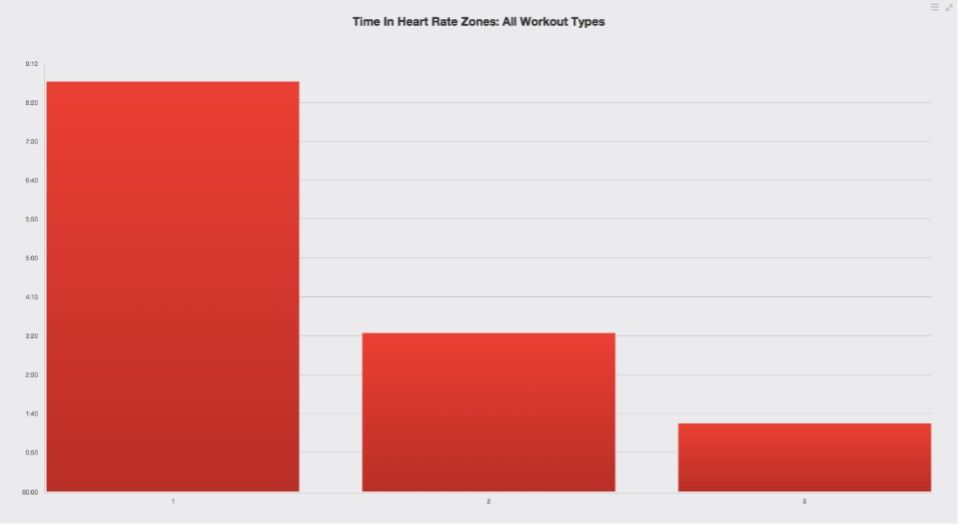
Take-home points
For Ironman distance racing or any sports preparation for that matter, we have to consider the principle of specificity. For Ironman, as we are still working in an aerobic event, building aerobic endurance is of key importance. Thus, however you’re skinning it, in your Ironman training, your fundamental principle needs to be your aerobic foundation. Ideally, we should be working within a range of training intensity distributions that span across the polarized (80/20) and pyramidal (60/40) models, depending on the phase of the training cycle. For example, early season training might look more polarized, while pyramidal may appear to form, as we get closer to racing.


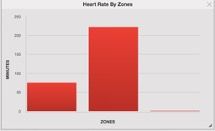
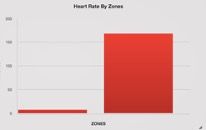
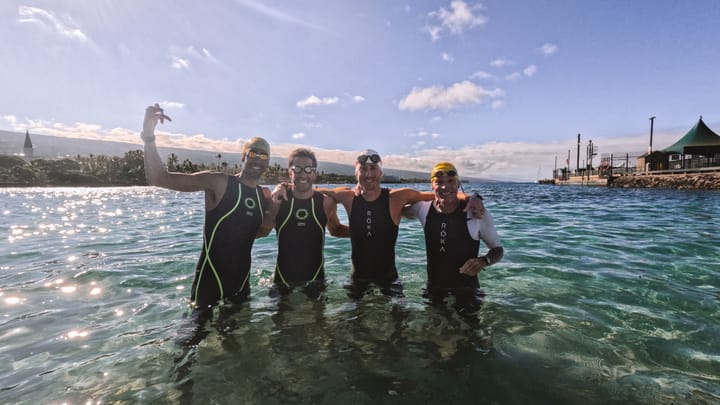

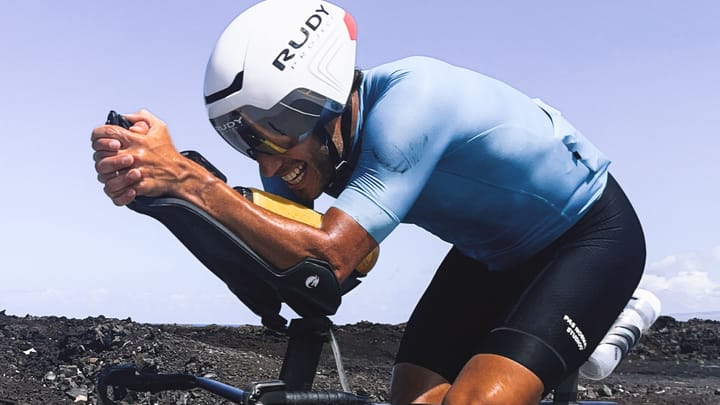
Comments ()